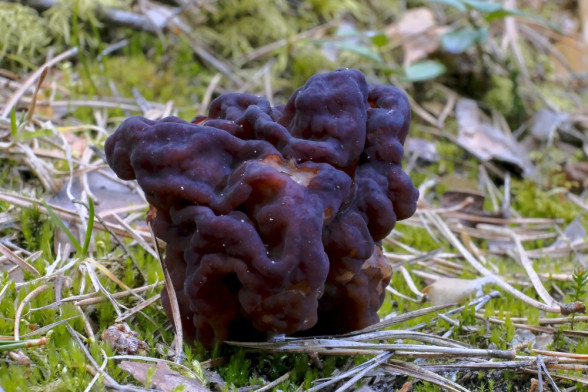
False Morel
False morels belong to a moderately common genus of cup fungi. Primarily encountered in spring, they are easily recognizable by the irregular, brain-like appearance of their caps. Most false morels found in Latvia are toxic, containing the poisonous substance gyromitrin. Although boiling with mandatory water draining or drying can significantly reduce the amount of gyromitrin, complete elimination is not possible.
The fruiting bodies of false morels reach heights of 2-20 cm and diameters of up to 30 cm, consisting of a stem and a cap. They are fleshy or waxily fleshy and contain the toxic gyromitrin in various concentrations. The cap of false morels is convoluted, lobed, irregularly round, oval, or shapeless, partially fused with the stem at the margin, exhibiting a pronounced wavy, brain-like, or walnut-like shape. For the species found in Latvia, caps are brown, reddish-brown, or yellowish-brown.
The stem of false morels is stout, white, or light-colored, and hollow. All false morels are saprotrophs, meaning they decompose the dead or decaying remains of other organisms and convert them into inorganic and simple organic compounds. False morels that produce fruiting bodies in spring are rarely encountered simultaneously with mushrooms that grow in summer and autumn. An exception is the edible morels and Verpa bohemica, which are also found in spring and are sometimes mixed by foragers.
Due to this common mixing, it is recommended to boil and discard the water at least once before consuming false morels to reduce potential toxicity. However, the differences between the genera are quite noticeable: while morels have a net-like, cellular surface, false morels have lobed surfaces without visible cells. The caps of false morels are typically reddish, a color absent in morels. False morels also appear more regular in shape.
If you have doubts about a specific mushroom while foraging, it is better not to take the risk and leave it behind.


